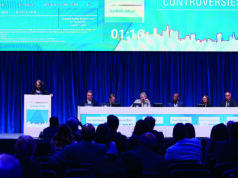The City University of New York (CUNY), Lawrence Livermore National Laboratory, and Near Infrared Imaging, have released the “Vein-Eye” camera. The Vein-Eye provides enhanced visualisation of veins when drawing blood or placing IVs in a patient’s arm or hand. The Vein-Eye is a non-contact medical device that displays real-time video for accurate vein punctures.
The Vein-Eye was developed by Stavros Demos using intellectual property developed at Lawrence Livermore National Laboratory. Demos also used intellectual property developed at the Institute of Ultrafast Spectroscopy and Lasers by Robert Alfano, distinguished professor of Science and Engineering, Departments of Physics and Electrical Engineering at The City College of New York, USA.
Alfano summarised the CUNY technology saying, “The Vein-Eye makes use of two of the salient properties of light – polarisation and near infrared wavelengths – and the result is an increased ability to visualise veins.”
According to Doug Adams, director of Commercialisation at CUNY, “We are very happy to finally see this innovative technology make its way into the market. This will improve patient care in a tangible way for a variety of patient populations by dramatically reducing the number of missed needle sticks.”
The Vein-Eye can be placed on a hospital cart, connected to a hospital bed or table, or connected to a hospital chair or a phlebotomist’s chair.
According to Demos, scientist at Lawrence Livermore National Laboratory who led the collaborative effort, “Near Infrared Imaging and Lawrence Livermore National Laboratory set a goal of building a system that would produce high quality images, be easy and safe to use, and be affordable to the worldwide community. I am pleased to say that we believe we have accomplished all of our objectives with the Vein-Eye.”
An early prototype was sent to a hospital in the Philippines after the country was shaken by earthquakes and floods. It was used with the most difficult patients – very young children whose veins had collapsed. The Vein-Eye prototype was successful and a significant help to the medical practitioners, with whom it still operates today.












